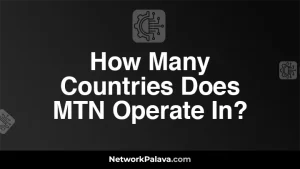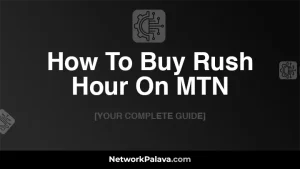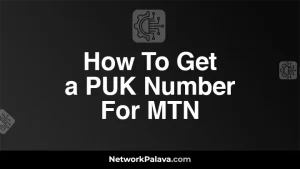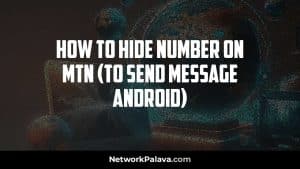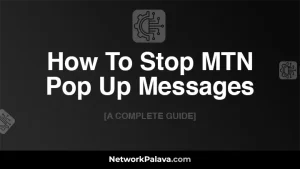How To Use MTN Video Data | Watch Videos Without Worries
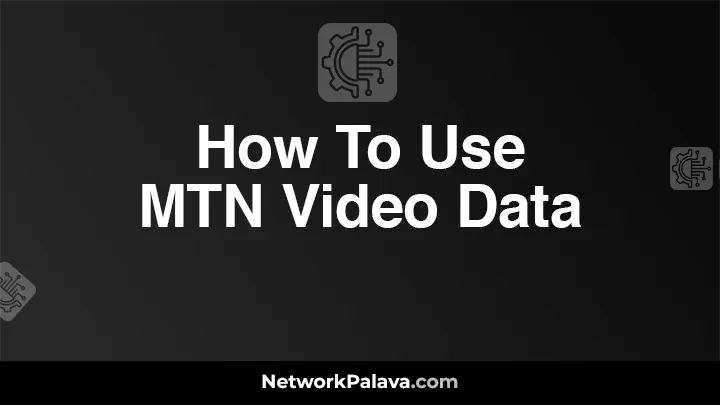
If you’re an MTN user in Nigeria and love streaming videos, MTN Video Data is an excellent way to enjoy your favorite shows, movies, and online content without exhausting your regular data bundle. In this article, I’ll walk you through everything you need to know about how to use MTN Video Data, from activating it to managing it efficiently. Let’s dive into it.
What is MTN Video Data?
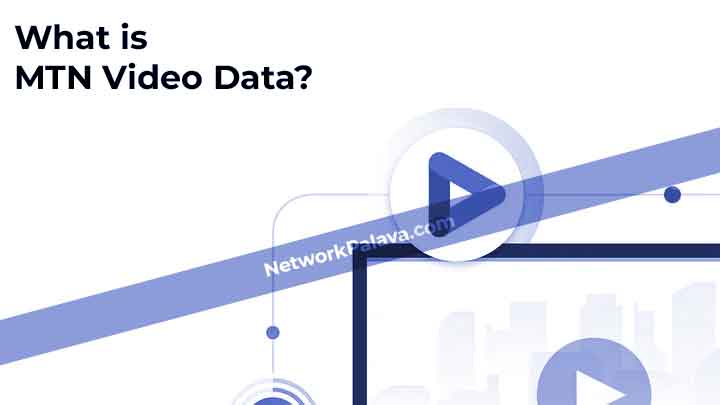
MTN Video Data is a specialized data plan offered by MTN Nigeria, specifically designed for video streaming purposes. It allows you to stream videos on supported platforms without worrying about your regular data running out. Whether you’re watching YouTube, Netflix, or other supported streaming platforms, MTN Video Data ensures that your video content streams smoothly and efficiently.
This package is a game-changer for those who spend a lot of time watching videos online, helping you save on regular data and focus purely on video consumption. It’s ideal for those who don’t want to mix their everyday browsing and app usage with their video streaming.
How To Activate MTN Video Data
Activating MTN Video Data is as simple as dialing a few USSD codes or using the MyMTN App. Here’s a quick guide:
- Dial *131# on your MTN line.
- Select option 2 for Data Bundles.
- Scroll down and select “MTN Video Data Plans.”
- Choose a suitable plan and confirm your purchase.
You will receive a confirmation message once the data plan has been activated. If you prefer, you can also activate MTN Video Data through the MyMTN App by going to the Data section and selecting MTN Video Data from the list of available plans. Now, you’re all set to stream as much video content as you want!
MTN Video Data Subscription Plans
MTN offers different Video Data plans, allowing you to choose the one that best suits your streaming habits. Here’s a quick look at some of the most popular options:
- 1-hour plan: Ideal for quick video sessions, this plan gives you a fixed amount of video streaming for 1 hour.
- 3-hour plan: If you have a few shows lined up, this plan allows you to stream uninterrupted for 3 hours.
- Daily plan: For more extensive streaming throughout the day, the daily plan provides a reasonable data allocation for all-day use.
These plans are affordable, and you can activate them easily using the steps outlined above.
How To Use MTN Video Data for Streaming

Once your MTN Video Data is activated, using it is a breeze. It automatically kicks in when you open a supported video streaming app, like YouTube, Netflix, or TikTok. This means you don’t have to toggle anything manually—MTN’s system recognizes when you’re streaming and applies the data plan accordingly.
For instance, if you’re in the middle of watching a YouTube tutorial and you’ve activated your 3-hour plan, the system will begin tracking your video usage. Your other internet activities, like browsing, social media, or app downloads, will continue to use your regular data bundle. This separation helps you optimize your data usage, ensuring your regular data doesn’t run out prematurely.
Supported Platforms for MTN Video Data
It’s important to know which platforms support MTN Video Data. Here are a few examples:
- YouTube: One of the most popular video platforms, perfect for tutorials, music videos, and vlogs.
- Netflix: Stream your favorite TV shows and movies.
- Instagram Videos: If you spend time watching reels and stories, MTN Video Data has got you covered.
- TikTok: Enjoy endless short videos without worrying about data.
Always make sure you are using a supported app to get the most out of your MTN Video Data.
Tips for Managing Your MTN Video Data Usage
Although MTN Video Data is tailored specifically for video content, it’s still wise to manage it well to ensure you get the most out of your purchase. Here are a few tips to help you do just that:
- Stream in standard definition (SD): Watching videos in HD consumes more data, so it’s advisable to opt for SD when possible. This way, you get more streaming time.
- Keep an eye on time-based plans: If you’ve activated an hourly plan, it’s easy to lose track of time when engrossed in content. Set reminders to check your remaining time.
- Turn off auto-play features: Platforms like YouTube automatically play the next video in the queue. Disable this feature to avoid using data unnecessarily when you’re done watching.
How To Check Your MTN Video Data Balance
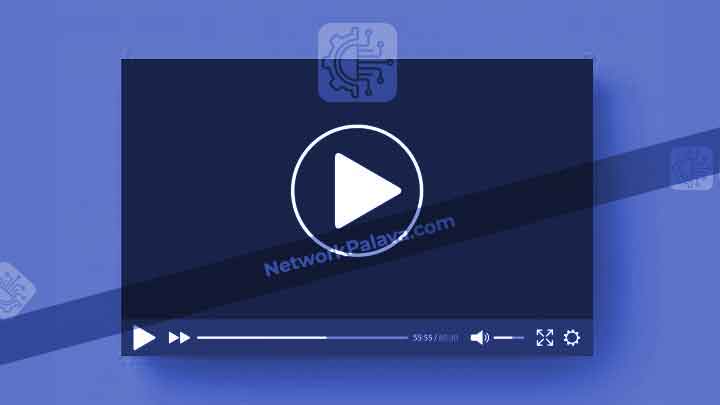
Keeping track of your data usage ensures that you don’t run out unexpectedly. Here’s how to check your MTN Video Data balance:
- Dial *559# from your MTN line.
- Select the “Data Balance” option.
- You’ll receive an SMS detailing your current balance, including your MTN Video Data.
Alternatively, you can check your data balance through the MyMTN App under the “Balance” section. This helps you stay on top of your usage, ensuring you can always plan your next top-up.
FAQs About How To Use MTN Video Data
Can I Use MTN Video Data on Any Platform?
No, MTN Video Data is restricted to specific video streaming platforms like YouTube, Netflix, Instagram, and TikTok. It won’t be applicable for other types of internet usage like downloading apps or browsing websites.
How Long Does MTN Video Data Last?
MTN Video Data plans come with time-specific options. For example, if you purchase a 1-hour plan, it will only last for an hour of active video streaming. You can choose different plans based on how long you plan to watch videos.
Is MTN Video Data Available on All MTN Plans?
Yes, MTN Video Data is available to all MTN customers. Whether you’re on a prepaid or postpaid plan, you can activate and enjoy the benefits of MTN Video Data.
What Happens When My MTN Video Data Is Exhausted?
When your MTN Video Data runs out, your regular data bundle will be used for video streaming. It’s essential to monitor your data usage so that you’re not surprised by additional charges to your main data plan.
By following these steps and understanding how MTN Video Data works, you can take full advantage of this service, allowing you to enjoy endless streaming without worrying about your regular data consumption.
1. What is MTN Video Data?
MTN Video Data is a specialized data plan offered by MTN Nigeria that allows you to stream videos seamlessly on platforms like YouTube, Netflix, and other streaming services. Unlike regular data plans, this one is tailored specifically for video consumption, ensuring that your video streams are smoother with less buffering and better quality. This makes it a great choice if you’re someone who watches a lot of videos online.
2. How Can I Activate MTN Video Data?
Activating MTN Video Data is simple. All you need to do is dial the activation code directly from your MTN line. The most common way to activate this plan is by dialing “1314# on your phone. Once you’ve dialed this code, follow the on-screen instructions, and you’ll be ready to stream your favorite content in no time. If you prefer, you can also visit your nearest MTN store for assistance.
3. How Much Does MTN Video Data Cost?
The cost of MTN Video Data varies depending on the plan you choose. MTN offers multiple options, from daily to monthly plans. For example, a daily plan might cost around ₦100, while a monthly plan could range from ₦1,000 to ₦3,000, depending on how much data you need. Always check with MTN for the latest pricing, as these can change based on promotions or updates to their offerings.
4. Which Streaming Platforms Can I Use with MTN Video Data?
MTN Video Data can be used to stream content on a variety of platforms. These include popular video streaming services like YouTube, Netflix, IrokoTV, Showmax, and more. So, whether you’re watching a movie, a YouTube vlog, or a series on Netflix, MTN Video Data helps optimize your experience without eating into your regular data.
5. How Long Does MTN Video Data Last?
The duration of your MTN Video Data depends on the plan you selected. Some plans are valid for 24 hours, while others last for a full month. For instance, if you choose a daily plan, your data will expire within 24 hours of activation, while a monthly plan will give you 30 days of access. Always double-check the validity period when activating a plan to ensure you’re getting what you need.
6. Can I Use MTN Video Data for Other Activities Besides Streaming Videos?
MTN Video Data is specifically optimized for video streaming, so using it for other activities like browsing or downloading files may not give you the same speed or experience. While technically you can use the data for other things, it’s best to reserve it for video-related activities to get the most out of the plan.
7. What Are the Benefits of Using MTN Video Data?
There are several benefits to using MTN Video Data, especially if you enjoy streaming content. Some key advantages include:
- Reduced buffering: The plan is optimized to ensure smooth streaming with less interruption.
- Cost-effective: It’s cheaper than using regular data for video streaming.
- No data depletion: Your regular data plan won’t be affected while using MTN Video Data.
- Wide platform compatibility: It works with most major video streaming platforms.
8. How Do I Check My MTN Video Data Balance?
To check your MTN Video Data balance, you can dial “1314# again, and you’ll receive a message showing how much data you have left. You can also use the MTN mobile app to keep track of your data usage and manage your subscriptions.
9. Can I Share My MTN Video Data With Others?
Currently, MTN Video Data cannot be shared with others like regular data plans. Each account is tied to an individual user and is meant for personal use. However, if you need more data, you can always purchase additional plans for yourself or share your regular data using MTN’s data sharing service.
10. Is MTN Video Data Available for All MTN Subscribers?
Yes, MTN Video Data is available to all MTN customers with an active MTN line. However, it’s important to check if the plan is available in your area, as coverage and availability might vary. If you encounter any issues activating or using the plan, you can reach out to MTN’s customer service for assistance.
11. What Happens If I Exhaust My MTN Video Data Before the Validity Period Ends?
If you run out of MTN Video Data before the plan expires, you will need to recharge or activate a new plan to continue streaming. MTN typically doesn’t roll over unused data, so if your video data is finished, it’s time to top up. You can also keep an eye on your usage to avoid running out unexpectedly.
12. Can I Use MTN Video Data on a Mobile Hotspot?
Unfortunately, MTN Video Data is not intended for use with mobile hotspots. It is meant for personal use directly on mobile devices for video streaming. If you’re using a hotspot to share internet with others, you should use your regular data plan instead.
13. Is MTN Video Data Suitable for HD or 4K Streaming?
Yes, MTN Video Data is designed to support high-quality streaming, including HD. However, if you’re streaming in 4K or ultra-high-definition, you might want to ensure you have a larger data plan. Even though MTN Video Data is optimized for video, streaming in higher resolutions like 4K could consume more data than typical HD content.
14. How Do I Cancel MTN Video Data?
If you no longer wish to use MTN Video Data, you can easily unsubscribe by dialing “1314#” and following the prompts to opt out or deactivate the service. You can also contact customer service for help if you encounter any issues with deactivation.
15. Is MTN Video Data Available on Both Prepaid and Postpaid Accounts?
Yes, MTN Video Data is available on both prepaid and postpaid accounts. Whether you’re using a pay-as-you-go plan or have a postpaid account, you can activate and use MTN Video Data for your streaming needs.
